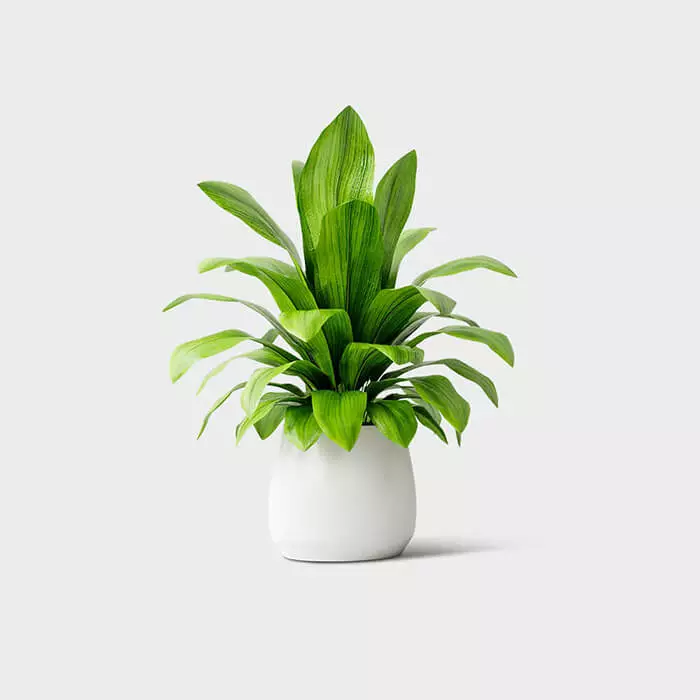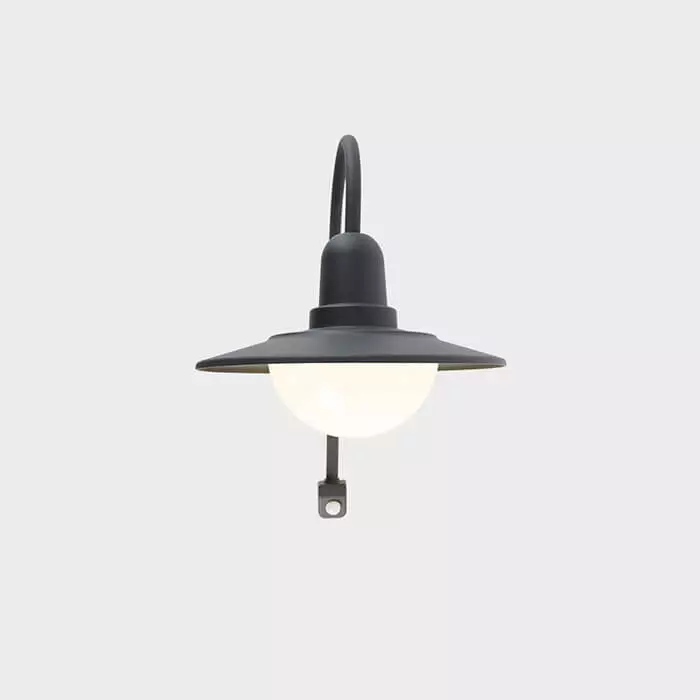To auto color correct in photoshop, use the auto tone or auto color options in the image menu. In just a few clicks, you can quickly enhance the colors of your image for a more balanced and natural look.
Photoshop offers several convenient tools for automatically correcting color in your images. With the auto tone and auto color options found in the image menu, you can effortlessly improve the color balance and overall appearance of your photos. These quick and easy features allow you to create a more visually appealing and professional result with just a few clicks.
By utilizing the auto color correction tools in photoshop, you can save time and achieve stunning color enhancements in your images.

Credit: www.clippingworld.com
Understanding The Importance Of Auto Color Correction
Learn how to auto color correct in photoshop and understand the importance of this technique for enhancing your images with accurate and vibrant colors. Enhance your photography skills today.
Color correction is a crucial step in enhancing images as it helps to improve their overall appearance and make them more visually appealing. By adjusting the colors and tones in an image, you can bring out its true beauty and ensure that it accurately represents the subject.
Why color correction is essential for enhancing images:
- Enhances visual appeal: Color correction helps to enhance the colors and tones in an image, making it more vibrant and captivating to the viewer.
- Fixes color imbalances: Sometimes, photographs can have color imbalances due to factors like lighting conditions or camera settings. Auto color correction in photoshop can effectively fix these imbalances, resulting in more accurate and natural-looking colors.
- Improves visibility and clarity: Color correction can also help to improve the visibility and clarity of an image by adjusting the brightness, contrast, and saturation levels. This ensures that the details in the image are more visible and well-defined.
- Creates a cohesive look: When working on a series of images, auto color correction can help maintain a cohesive look and feel by ensuring consistent color tones across the images.
- Saves time and effort: Manually correcting the colors in each image can be a time-consuming and tedious process. Auto color correction in photoshop streamlines this task, making it quicker and more efficient.
The benefits of using auto color correction in photoshop:
- Quick and convenient: Photoshop’s auto color correction feature allows you to make adjustments with just a few clicks, saving you time and effort compared to manually adjusting each color element.
- Preserves image quality: Auto color correction in photoshop preserves the original image quality while improving its overall appearance. This ensures that the image retains its details and sharpness.
- Provides a starting point: Photoshop’s auto color correction serves as a helpful starting point for further fine-tuning and customization. You can utilize the initial adjustments as a baseline and make additional edits as needed.
- Offers flexibility with adjustments: Auto color correction in photoshop provides a range of adjustment options that can be easily modified to achieve the desired result. From color balance to exposure settings, you have the flexibility to experiment and refine the corrections until you achieve the desired look.
By understanding the importance of auto color correction in photoshop, you can effectively enhance the appearance of your images, bringing out their true potential and captivating your audience.
Steps To Auto Color Correct Images In Photoshop
Learn how to auto color correct images in photoshop with these simple steps. Achieve precise and professional results in just a few clicks, saving time and enhancing your images effortlessly.
Importing the image into photoshop:
- Open photoshop and select “file” from the menu bar.
- Click on “open” to browse and select the image you want to color correct.
- Once you have selected the image, click on “open” to import it into photoshop.
Navigating to the “auto color correction” feature:
- Go to the “enhance” menu at the top of the screen.
- From the drop-down menu, choose “auto color correction.”
- Alternatively, you can press “ctrl + shift + b” on your keyboard to access the feature.
Adjusting the color correction settings:
- After selecting the “auto color correction” option, a dialogue box will open.
- Here, you will find various options to adjust the color correction settings.
- The default setting is usually “auto levels,” which attempts to automatically correct the levels of brightness, contrast, and color in your image.
- If you’re not satisfied with the results, you can experiment with other options like “auto contrast” or “auto color.”
Remember, automatic color correction may not always give you the desired results, especially for complex images or specific artistic preferences. Therefore, it’s recommended to manually adjust the color levels for more precise control.
Exploring Advanced Techniques For Auto Color Correction
Discover the advanced techniques of auto color correction in photoshop as we delve into the art of enhancing and perfecting your images effortlessly. Master the art of auto color correction and transform your photographs with these powerful tips and tricks.
Utilizing The “Auto Tone” Feature For Quick Adjustments:
- With the “auto tone” feature in photoshop, you can quickly adjust the tonal levels of your images and enhance their overall appearance.
- This tool analyzes the image and automatically adjusts the brightness, contrast, and color balance to produce a more balanced and realistic result.
- Simply go to the “image” menu, choose “adjustments,” and then select “auto tone” from the options.
- The “auto tone” feature is particularly useful when you need to make quick adjustments to multiple images or when you want to fix an image that has issues with exposure or color balance.
- Keep in mind that while the “auto tone” feature is a great starting point, you might still need to fine-tune the adjustments to achieve the desired look for your image.
Understanding The “Auto Contrast” Tool For Enhancing Image Quality:
- The “auto contrast” tool is another powerful feature in photoshop that allows you to enhance the quality of your images by adjusting the tonal range.
- By analyzing the distribution of brightness values throughout an image, the “auto contrast” tool automatically stretches the tonal range, making dark areas appear darker and light areas appear lighter.
- This can help bring out more details in both the shadows and highlights of your image, resulting in a visually appealing and dynamic look.
- To use the “auto contrast” tool, navigate to the “image” menu, select “adjustments,” and then choose “auto contrast.”
- It’s essential to note that the “auto contrast” tool might not always produce the desired results, especially in images with extreme lighting conditions or artistic intentions. In those cases, manual adjustments may be needed.
Using The “Auto Color” Feature To Optimize Color Balance:
- The “auto color” feature in photoshop allows you to optimize the color balance of your images automatically.
- By analyzing the existing colors and hues within an image, this tool adjusts the color levels to achieve a more balanced and accurate representation of the original scene.
- To access the “auto color” feature, go to the “image” menu, select “adjustments,” and then click on “auto color.”
- This feature is particularly useful when you want to eliminate any color cast or correct color temperature issues in your images.
- Keep in mind that while the “auto color” feature can be a great starting point, you might still need to make manual adjustments to achieve the exact color balance you desire. Monitor calibration and understanding color theory can also greatly assist in achieving accurate color reproduction.
Remember, utilizing the “auto tone,” “auto contrast,” and “auto color” features can be a time-saving way to make quick adjustments to your images. However, it’s important to note that these automatic corrections might not always provide the perfect result, especially in images with unique artistic intentions.
Manual adjustments and a keen eye are often necessary to achieve the desired outcome. So, go ahead and experiment with these advanced techniques to take your auto color correction skills to the next level.
Customizing Auto Color Correction Settings For Precise Results
Discover how to achieve precise results in auto color correction by customizing the settings in photoshop. Learn valuable techniques for enhancing your images with accurate and professional-looking colors.
Color correction is an essential part of any photo editing process, as it allows you to enhance the colors and tones of your images. While automatic color correction tools in photoshop can be incredibly helpful, they may not always give you the precise results you desire.
That’s where customizing the auto color correction settings comes in. By understanding the role of histograms, adjusting the white balance, and fine-tuning exposure and saturation levels, you can achieve more accurate and vibrant colors in your photos.
Understanding The Role Of Histograms In Color Correction:
- Histograms provide a visual representation of the tonal distribution in your image. They show the distribution of brightness levels, from shadows to highlights.
- Analyzing the histogram can help you identify any color imbalances or issues in your image’s exposure.
- Adjusting the image based on the histogram ensures accurate color representation by redistributing the tones and colors in the image.
Adjusting The White Balance For Accurate Color Representation:
- White balance plays a crucial role in achieving accurate color representation in your photos.
- Photoshop’s auto white balance feature may not always produce the desired results, especially in challenging lighting conditions.
- By customizing the white balance settings, you can correct color casts and ensure that whites appear true to life in your images.
Fine-Tuning Exposure And Saturation Levels:
- After correcting the white balance, you can fine-tune the exposure levels to achieve the desired brightness and contrast in your image.
- Adjusting the exposure can help bring out details in shadows and highlights, giving your photo more depth and dimension.
- Saturation levels determine the intensity of colors in your image. By tweaking the saturation, you can make colors more vibrant or desaturated for a more muted look.
Implementing these customized settings in photoshop’s auto color correction feature gives you greater control over the final look and feel of your images. While automatic corrections can save time, taking the extra step to tailor the settings to your specific needs ensures precise results that truly showcase your artistic vision.
So don’t be afraid to experiment and find the perfect balance of colors and tones in your photographs.
Enhancing Multiple Images Simultaneously With Batch Processing
Batch processing in photoshop allows users to enhance multiple images simultaneously by automatically correcting colors. This efficient feature saves time and effort, delivering professional-looking results with ease.
Streamlining The Auto Color Correction Process
The auto color correction feature in photoshop is an incredibly useful tool for enhancing the colors in your images. But what if you have a large batch of images that all need the same correction applied? Going through each image individually can be time-consuming and tedious.
That’s where batch processing comes in.
Saving Time And Effort Through Batch Processing:
With batch processing, you can apply the auto color correction to multiple images simultaneously, saving you both time and effort. Here are some key benefits of using batch processing for auto color correction:
- Efficiency: Batch processing allows you to work with multiple images at once, eliminating the need to repeat the same steps for each individual image.
- Consistency: Applying the same auto color correction settings to a series of images helps maintain a consistent look and feel across the entire set.
- Time-saving: By automating the process, you can complete the color correction for a large number of images within minutes, rather than spending hours adjusting each image individually.
- Customization: While batch processing applies the same correction settings to multiple images, you still have the flexibility to adjust the settings to suit your preferences or the specific needs of certain images.
Applying Consistent Correction To A Series Of Images:
When working with a series of images, such as a wedding photoshoot or a product catalog, it’s crucial to ensure that all the images have a consistent color balance. Batch processing in photoshop allows you to achieve this. Here’s how:
- Open photoshop and navigate to file > automate > batch.
- In the batch dialog box, select the folder containing the images you want to correct.
- Choose the action you want to apply (in this case, auto color correction).
- Specify the destination where the corrected images will be saved.
- Click on the “ok” button to start the batch processing.
By following these simple steps, photoshop will auto correct the color of each image in the chosen folder, applying the same settings to all of them. This ensures that all images in the series maintain a consistent look and feel, making your workflow more efficient and saving you valuable time.
Batch processing in photoshop streamlines the auto color correction process, saving you time and effort when working with multiple images. By applying consistent correction settings to a series of images, you can achieve a cohesive visual style throughout your project.
So, give it a try and experience the efficiency and convenience of batch processing in photoshop.
Troubleshooting Common Issues In Auto Color Correction
Learn how to troubleshoot common issues when using auto color correction in photoshop. Discover effective techniques to enhance your images and achieve the desired color balance with ease.
Handling Color Cast And Temperature Challenges:
- Color cast occurs when an unwanted color dominates the image. By using the auto color correct feature in photoshop, you can easily address this issue.
- Another common challenge is adjusting the temperature, which refers to the warmth or coolness of the image. The auto color correct tool can help you achieve the desired temperature balance.
Dealing With Overexposure And Underexposure:
- Overexposure happens when the image appears too bright, causing loss of detail and washed-out colors. With auto color correct, you can effectively fix overexposed areas and restore the image’s balance.
- Similarly, underexposure occurs when the image is too dark, resulting in the loss of important details. Photoshop’s auto color correct feature allows you to precisely brighten those dark areas and improve the overall exposure.
Addressing Issues With Color Balance And Skin Tones:
- Color balance problems can arise when the colors in the image appear unnatural or skewed. Auto color correct in photoshop can assist in adjusting the color balance to achieve a more accurate and pleasing representation of the scene.
- When it comes to skin tones, accurate representation is crucial. Auto color correct can help you enhance and balance the skin tones in your images, ensuring a more natural and lifelike appearance.
Remember, photoshop’s auto color correct feature provides a quick and effective way to tackle various common issues in color correction. Whether you are dealing with color cast, exposure problems, or skin tone adjustments, utilizing this tool will greatly enhance the quality of your images.
Expanding Your Color Correction Arsenal In Photoshop
Expand your color correction arsenal in photoshop with this helpful guide on how to auto color correct. Discover easy and effective techniques to enhance your photos and achieve stunning results with just a few simple steps.
In the world of digital photography, achieving accurate color representation is crucial for creating stunning visuals. Photoshop provides a range of tools and techniques to help you enhance and adjust colors in your images. In this section, we will explore additional tools for manual color adjustment, understand advanced techniques like curves and levels, and discover how to combine auto color correction with other editing features.
Exploring Additional Tools For Manual Color Adjustment
In addition to the basic auto color correction feature in photoshop, there are several other tools that you can utilize to manually adjust and fine-tune colors in your images. These tools include:
- Color balance: With this tool, you can individually adjust the colors in the shadows, midtones, and highlights, allowing you to achieve the desired color balance in your image.
- Selective color: This tool enables you to make precise adjustments to specific colors or color ranges in your image. You can control the amount of cyan, magenta, yellow, or black in each color range, giving you full creative control over the color correction process.
- Hue/saturation: Use this tool to change the overall hue, saturation, and lightness of the colors in your image. You can either target specific colors or make adjustments that affect the entire image.
- Replace color: If you need to change the color of a specific object or region in your image, the replace color tool allows you to select the color you want to replace and apply a new color in its place.
Understanding Advanced Techniques Like Curves And Levels:
Curves and levels are powerful tools that provide granular control over your image’s color and tonal range. These advanced techniques allow you to:
- Curves: Adjusting the curves in an image allows you to manipulate the brightness and contrast levels of different areas. By creating anchor points on the curves graph, you can precisely control the tonal range and make targeted adjustments to shadows, midtones, and highlights.
- Levels: Levels adjustment tool helps you fine-tune the overall tonal values of your image. With a histogram representing the distribution of pixels in various tonal ranges, you can easily adjust the shadows, midtones, and highlights by manipulating the input and output sliders.
Combining Auto Color Correction With Other Editing Features:
Auto color correction in photoshop is a great starting point, but combining it with other editing features can take your color correction process to the next level. Here are some ways to enhance your images further:
- Layer blending modes: Experiment with different blending modes to add depth and richness to your colors. By adjusting the opacity of the top layer, you can blend the colors seamlessly for a more harmonious look.
- Masking techniques: Use layer masks to selectively apply color corrections to specific areas of your image. This allows you to retain the original colors in certain parts while enhancing or adjusting the colors in others.
- Gradient maps: Applying gradient maps can result in creative and dramatic color effects. A gradient map maps the original tonal values of your image to a new set of colors, giving you endless possibilities to experiment with color correction and artistic expression.
By exploring these additional tools, understanding advanced techniques like curves and levels, and combining auto color correction with other editing features, you can elevate the impact of your images, achieving the desired color correction and visual aesthetics in photoshop.
Finalizing And Exporting Corrected Images
Learn how to effortlessly auto color correct images in photoshop and achieve perfect results every time. Find out the step-by-step process for finalizing and exporting your corrected images with ease.
Reviewing The Corrected Image For Desired Results:
After auto color correcting your image in photoshop, it’s crucial to review the changes and ensure they meet your desired results. Here’s how you can effectively evaluate the corrected image:
- Compare with the original: Start by comparing the corrected image side by side with the original. Look for any changes in colors, brightness, and overall appearance.
- Check for color accuracy: Examine the image to ensure that the colors now appear more natural and true to life. Pay attention to skin tones, landscapes, or any other elements that should be accurately represented.
- Assess brightness and contrast: Analyze the image for proper exposure and contrast. Look for any areas that may appear too bright or washed out, as well as those that lack detail due to excessive darkness.
- Evaluate sharpness: Check the image’s sharpness and focus. Make sure that key parts of the image are appropriately defined and not overly blurred.
- Review any unintended consequences: While auto color correction can work wonders, it can sometimes introduce unintended changes. Look out for any artifacts, noise, or strange alterations that detract from the image’s overall quality.
Remember, the goal is to achieve a visually appealing image that accurately represents the original subject matter.
Saving The File In The Appropriate Format And Resolution:
Once you’re satisfied with the auto color correction, it’s essential to save the file in the appropriate format and resolution. Follow these steps to ensure optimal results:
- Choose the correct file format: Determine the intended use of the image and select the appropriate file format accordingly. Common options include jpeg for web use, tiff for print, or png for images that require transparency.
- Consider compression: If saving the image in a compressed format, adjust the compression level based on the desired balance between file size and image quality. Keep in mind that higher compression can result in loss of detail.
- Set the resolution: Set the resolution based on the image’s purpose. For web use, a resolution of 72 pixels per inch (ppi) is generally sufficient. On the other hand, print images usually require a higher resolution, such as 300 ppi, to ensure optimal print quality.
- Consider color space: Depending on the final medium, choose an appropriate color space. Common options include srgb for web use and adobe rgb or cmyk for print.
Exporting The Image For Various Mediums:
To make the most of your auto color corrected image, you’ll likely need to export it for different mediums, such as web or print. Here are some considerations to keep in mind:
- Web export: When exporting for the web, aim for a balance between image quality and file size. Optimize the image by resizing it to the desired dimensions and adjusting the file format and compression settings accordingly.
- Print export: For print use, ensure the image is exported at the appropriate resolution. Consider consulting with your print service provider to determine the optimal color space and file format for the specific printing process.
- Medium-specific adjustments: Different mediums may require specific adjustments beyond color correction. For instance, images destined for social media might benefit from additional resizing, cropping, or watermarking.
- Metadata and labeling: Before exporting, consider adding relevant metadata to the image, such as copyright information or keywords, for improved organization and discoverability.
By carefully reviewing, saving, and exporting your auto color corrected images, you can ensure they are ready for various mediums, maintaining their intended impact and visual appeal.
Frequently Asked Questions On How To Auto Color Correct In Photoshop
How Can I Auto Color Correct In Photoshop?
To auto color correct in photoshop, go to the “image” menu, choose “adjustments,” and select “auto color. ” This will automatically analyze and correct the color balance and contrast of your image, giving you a more accurate representation of the original colors.
What Is The Benefit Of Auto Color Correction In Photoshop?
Auto color correction in photoshop helps you save time by automatically adjusting the color balance and contrast of your images. It ensures more accurate colors and enhances the overall quality of your photos, making them look more vibrant and professional.
Can I Customize The Auto Color Correction In Photoshop?
Yes, you can customize the auto color correction in photoshop. After applying the auto correction, you can fine-tune the settings by adjusting the brightness, contrast, levels, and color balance manually. This way, you have full control over the final look of your image while still benefiting from the initial auto correction.
Will Auto Color Correction Ruin My Original Image?
No, auto color correction in photoshop won’t ruin your original image. It makes adjustments based on the analysis of the image’s colors and contrast, aiming to improve the overall appearance. If you are not satisfied with the result, you can always undo the changes or fine-tune the settings to achieve your desired look.
Can I Use Auto Color Correction For Multiple Images At Once In Photoshop?
Yes, you can use auto color correction for multiple images at once in photoshop. Simply create an action by recording the steps for applying auto color correction to one image, then apply that action to a batch of images. This saves time and ensures consistent color correction across all your pictures.
Conclusion
Photoshop is an incredibly powerful tool for editing and enhancing your photos, and auto color correction is a feature that can save you time and effort. By automatically analyzing the colors in your image and making adjustments accordingly, you can achieve more accurate and vibrant results with just a few clicks.
Whether you’re a professional photographer or a hobbyist, learning how to use the auto color correction feature in photoshop can greatly improve the quality of your images. It allows you to quickly and easily correct any color issues, such as white balance or exposure problems, resulting in a more visually appealing final product.
So, next time you’re editing your photos in photoshop, don’t forget to take advantage of this powerful feature and see the difference it can make in your images. Happy editing!












